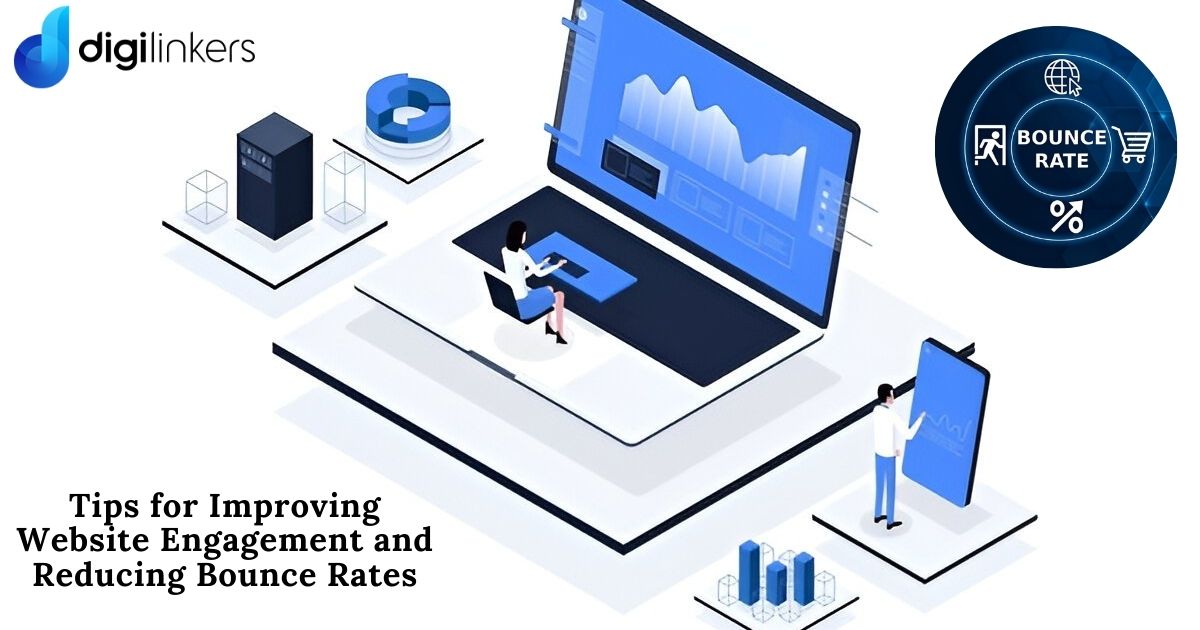Tips for Improving Website Engagement and Reducing Bounce Rates

15-02-2025
In the digital age, your website is often the first point of contact between your business and potential customers. If visitors arrive on your site and leave immediately, it not only affects your website's performance but also your business's potential to convert those visitors into loyal customers. High bounce rates indicate that your website isn't engaging visitors effectively, leading to missed opportunities. So, how can you improve engagement and reduce bounce rates? Here are some tips to help you achieve just that.
Optimize Website Load Speed
One of the most common reasons visitors leave a website quickly is because it takes too long to load. In today's fast-paced world, people expect websites to load within a few seconds. If your site takes more than 3 seconds to load, there's a significant chance that users will bounce. To avoid this, optimize images, enable browser caching, and minimize the use of heavy scripts. Consider using a content delivery network (CDN) to improve load times globally.
Enhance Website Design and User Experience (UX)
First impressions matter. An attractive and easy-to-navigate website will encourage visitors to stay longer. Ensure that your website design is clean, professional, and responsive on all devices, whether it's a desktop, tablet, or smartphone. Organize your content logically, making it easy for users to find what they need without unnecessary clicks. Avoid overwhelming visitors with too many options—use clear calls-to-action (CTAs) that guide them toward the next steps.
Improve Content Quality
Great content is key to keeping visitors engaged. If your website’s content isn’t relevant, informative, or engaging, users will leave quickly. Create content that addresses the needs of your target audience. Make sure it's well-written, easy to read, and provides value. Break up large blocks of text with bullet points, images, or videos to make it more digestible. Offering high-quality blog posts, case studies, and educational resources can increase the time visitors spend on your website.
Use Compelling Calls-to-Action (CTAs)
An effective call-to-action (CTA) can make a huge difference in reducing bounce rates and increasing engagement. Make sure your CTAs are clear, concise, and placed strategically on your website. Whether you want users to sign up for a newsletter, request a quote, or make a purchase, your CTAs should be prominent and compelling. Use action-oriented words like "Get Started," "Learn More," or "Join Now" to encourage users to click.
Mobile Optimization is Essential
A large portion of website traffic comes from mobile devices, so it’s critical to ensure that your website is fully optimized for mobile users. A responsive website design adjusts to any screen size, providing a seamless experience across devices. Test your website on different mobile devices to make sure that all elements, from images to buttons, are functioning properly. If your site isn’t mobile-friendly, you're likely losing a significant portion of your potential audience.
Improve Internal Linking
Internal linking helps guide visitors through your website, increasing engagement by encouraging them to explore more pages. Include links to related articles, products, or services throughout your content to create a seamless journey for users. This not only keeps visitors on your site for longer periods but also helps improve SEO. The more pages visitors view, the lower the bounce rate becomes.
Leverage Social Proof
Social proof, such as testimonials, reviews, and case studies, can have a significant impact on engagement. When visitors see that others trust your brand or product, they are more likely to stay and explore further. Display customer reviews or user-generated content prominently on your website to establish trust and credibility. This builds a positive reputation and encourages visitors to engage with your site more.
Offer Engaging Visuals and Multimedia
Using visuals such as images, videos, infographics, and animations can make your website more engaging and enjoyable to navigate. People are more likely to stay on your website longer if the content is visually appealing. For example, videos on product pages or landing pages can help convey information more effectively and keep users engaged. Interactive elements like quizzes or polls can also increase visitor interaction and reduce bounce rates.
Use Analytics to Track User Behavior
Understanding how visitors interact with your website is crucial for improving engagement. Use tools like Google Analytics to monitor bounce rates, average session duration, and user flow. By identifying pages where visitors drop off, you can make targeted improvements to those areas. Continuous testing and data analysis will help refine your website and keep bounce rates low.
Conclusion
Reducing bounce rates and improving website engagement requires a combination of technical optimization, compelling content, and a great user experience. By implementing these tips, you can create a more engaging website that keeps visitors coming back. Focus on website speed, design, quality content, and strategic CTAs, and you'll be on your way to improving both engagement and conversions. Remember, the more time users spend on your site, the more likely they are to convert into customers. Keep refining and optimizing, and watch your website performance improve.
Ready to take your website to the next level? Digilinkers, a trusted Digital Marketing Agency in Delhi, specializes in website development and digital marketing strategies that boost engagement and reduce bounce rates. Let us help you create a website that converts visitors into loyal customers. Contact Digilinkers today and watch your online presence grow!
